Fouls in Football and Signals That the Referee Should Do
Unlock all answers in this set
Unlock answersquestion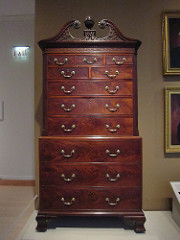
Blocking Below the Waist

answer
An illegal block, from any direction, below the waist by any defensive player or by an offensive player under certain situations, by any player after change of possession, by any player in high school with certain exceptions. Sometimes incorrectly referred to as a \"chop block\". The signal is: Both hands brought down, wrists turned inward, in a chopping motion across the front of the thighs.
question
Block in the Back (offense, defense, or special teams)

answer
A blocker contacting a non-ballcarrying member of the opposing team from behind and above the waist. The signal is: One arm extended horizontally in front of the body, palm facing outward. The other hand grasps the first hand's wrist and pushes outward.
question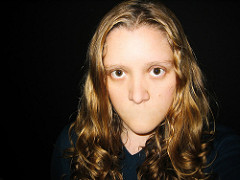
Chop Block (offense)

answer
An offensive player tries to cut block a defensive player that is already being blocked by another offensive player. The second block may need to be below the thigh or knee, depending on the code. The signal is: Arms extended alongside the body, palms facing outward, then moving in to the upper thigh in a chopping motion.
question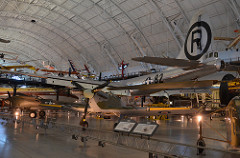
Clipping (offense, defense, or special teams)

answer
A blocker contacting a non-ballcarrying opponent from behind and at or below the waist. The signal is: Chopping the back of one thigh with the hand.
question
Delay of Game (offense, defense, or special teams)

answer
Any action which delays the next play. On offense, this means failing to snap the ball before the play clock reaches zero. It may also include spiking the ball. On defense, it occurs when a player hinders the offense in hurrying to make the next snap. This happens most often in the last two minutes of a half when the offense is trying to go down the field in a hurry. The defense can also be flagged for a delay of game if a player spikes the ball after the end of a play. On special teams, it happens when the return team runs after signaling for a fair catch, or the defense does not unpile in a timely manner after the play ends. The signal is: Upper arms extended out from the body, forearms bent toward the opposite arm, such that the arms lie on top of one another or that each arm touches the opposite shoulder.
question
Encroachment (defense)

answer
Before the snap, a defensive player illegally crosses the line of scrimmage and makes contact with an opponent or has a clear path to the quarterback. In high school, this includes any crossing of the neutral zone by either team, whether contact is made or not. The play is not allowed to begin. The signal is: Two hands placed on the hips.
question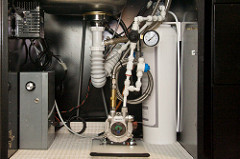
Equipment Violation

answer
Any player in the game without necessary safety equipment (mouthpiece, pads), without chin straps properly fastened or in violation of certain clothing rules (e.g. sock requirements in college). The signal is: One hand placed on the back of the head.
question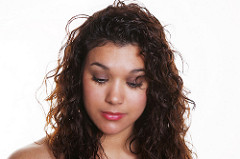
Face Mask (offense, defense, or special teams)

answer
Grasping the face mask of another player while attempting to block or tackle him. In the NFL, the grasping and pulling/twisting must be intentional to be penalized. Under NCAA rules, it is a foul to grasp and twist the face mask. Under high school rules, any grasping of the face mask, any helmet opening, or the chin strap is a foul, though grasping and twisting carries a more severe penalty than \"incidental\" grasping without any twisting. The signal is: One arm in front of the body, forearm extended vertically. The hand is closed into a fist in front of the face and pulled downward.
question
False Start (offense)

answer
An offensive player illegally moves after lining up for—but prior to—the snap. Since the ball is dead, the down does not begin. Any player who moves after he has gotten in his set position before the snap in a way that simulates the start of the play. The signal is: Two arms in front of chest horizontally with closed fists \"rolling\" around each other (same signal that basketball referees use to signal traveling).
question
Helmet-to-Helmet Collision (offense or defense)
answer
The act of banging one's helmet into the helmet of another player. Can also result in a fine and/or suspension.
question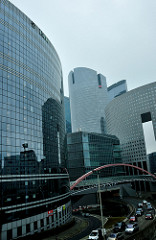
Holding (offense or defense)

answer
Illegally grasping or pulling an opponent other than the ball carrier while attempting to ward off a block or cover a receiver. One of the most commonly called penalties. If a penalty for holding that occurred in the offense's end zone is accepted, a safety results. The signal is: Raising one arm in front of the body (forearm is roughly vertical with elbow at bottom) and grabbing its wrist with the opposite hand.
question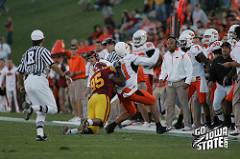
Horse-Collar Tackle

answer
Illegally tackling another player by grabbing the inside of the ball carrier's shoulder pads or jersey from behind and yanking the player down. The signal is: Raising one arm to the side of the body with the elbow bent, so that the closed fist is located near the neck. The fist is then pulled away, horizontally, from the neck.
question
Illegal Batting (offense)
answer
Any intentional batting of a loose ball or ball in player possession. Batting is legal in certain limited situations, such as blocking a kick or deflecting a forward pass (any eligible player may bat a forward pass in any direction). For NFL referees, the signal is: Both arms extended the side, with the fingertips brought up to the shoulder of the respective arms. For NCAA or HS referees, the signal is: One arm extended the side, with the fingertips brought up to the shoulder of the same arm.
question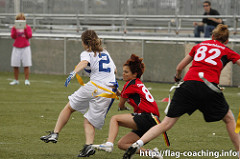
Illegal Contact (defense)

answer
Making significant contact with a receiver after the receiver has advanced five yards beyond the line of scrimmage. The illegal contact is called only if the quarterback is still in pocket and the ball is still in his hands. This rule was adopted in 1978, and its enactment is regarded as contributing to the increase in passing efficiency the NFL has witnessed since that time. The signal is: One arm in front of the body with palm out and fingers up, moved in a pushing motion out.
question
Illegal Formation

answer
Fewer than 7 players line up on the line of scrimmage (NFL/High School); more than four players in the backfield (NCAA only); eligible receivers fail to line up as the leftmost and rightmost players on the line in the NFL; or when five properly numbered ineligible players fail to line up on the line. The signal is the same as the \"False Start\" penalty.
question
Illegal Forward Pass (offense)
answer
A forward pass is thrown from past the line of scrimmage, after a change of possession, or when a second forward pass is thrown on the same play. The signal is: One hand, flat, waved behind the small of the back.
question
Illegal Hands to the Face

answer
Pushing or hitting a player on offense in the head or helmet. For NFL/NCAA referees, the signal is: One open fist in a pushing motion to the referee's chin, while High School Referees do the same signal as holding.
question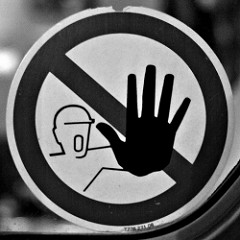
Illegal Kick

answer
Any ball not kicked in accordance with the rules, for instance: #1. When an attempted drop kick bounces more than once before being kicked. #2. When a player kicks the ball after a turnover or receiving an opponent's kick (the \"return kick\"). #3. When a player kicks the ball after having advanced the ball past the line of scrimmage. All of the above kicks are legal in Canadian football. One is illegal in CFL. A player kicks the ball after the opponent fumbles it, without securing possession (also illegal in Canadian football). The signal is: Right arm is curled so that the hand touches the shoulder.
question
Illegal Kickoff (special teams)
answer
The ball, after a kickoff, heads out of bounds between both goal lines without touching any player on either team. The signal is the same as the \"False Start\" and the \"Illegal Formation\" penalties.
question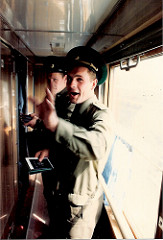
Illegal Motion (offense)

answer
A player in motion is moving forward at the time of the snap. The signal is: One arm in front of chest, palm open and down, with the elbow out to the side, moved away from chest.
question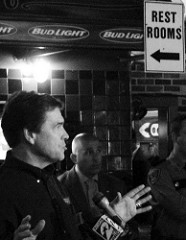
Illegal Participation

answer
Twelve or more players participate during the play, because the extra players either are not detected before the snap or enter during the play. Once the down begins, no further players may enter the field and participate, even if there are fewer than 11 players. Illegal participation is also called when an offensive player goes out of bounds (unless forced out by contact by the defense) and returns during the play. The signal is: Two hands, palms down, touching the top of the head, with an elbow out to each side.
question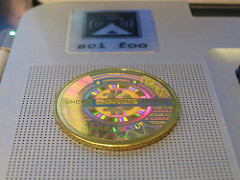
Illegal Shift

answer
A player is not in motion but is not set before the snap; more than one player is in motion at the snap; or after more than one player was moving (shifting), all eleven players have not been motionless for one second. The signal is: Two arms in front of chest, palms open and down, with the elbows out to the side, moved away from chest.
question
Illegal Substitution/Substitution Infraction/\"Too many men on the field\"

answer
The team has twelve or more players in the huddle for a period of 3-5 seconds or twelve or more players in the formation before a play or a player is attempting to leave the field as the ball is snapped. For NCAA/High School referees the signal is: Arm along the side of the body with the palm of the hand touching the opposite shoulder, while NFL Referees do the same signal as the \"Illegal Participation\" penalty.
question
Illegal Touching of a Forward Pass (offense)
answer
A forward pass first touches an ineligible receiver (an offensive lineman). If the ball is touched by the defenders first, any player may touch it. The signal is: One hand held up to shoulder, fingertips touching the shoulder. NFL referees uses two hands held up to shoulders, fingertips touching the shoulders.
question
Illegal Touching of a Free Kick (special teams)
answer
The ball, after the free kick, first touches a member of the kicking team prior to travelling 10 yards. This is most often seen on an onside kick where a member of the kicking team prematurely comes in contact with the ball in an attempt to recover it. Like illegal touching of a forward pass, if a defender (member of the receiving team) first touches the ball, any player may touch it. Note: In NFHS it is called 'first touching', not 'illegal touching'. It is also illegal touching for a kicking team player to touch a free kick after going out of bounds, unless the kick is touched by the receiving team. All referees do the same signal as the \"Illegal Touching of a Forward Pass\" penalty.
question
Illegal Touching of a Scrimmage Kick (special teams)
answer
The ball, during the scrimmage kick, is touched by a kicking team player, unless the kick is touched by the receiving team or another member of the kicking team. NFL Referees uses one hand held up to shoulder, fingertips touching the shoulder while NCAA referees uses two hands held up to shoulders, fingertips touching the shoulders.
question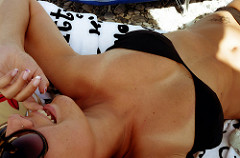
Illegal Use of Hands

answer
Illegal use of the hands against a player on offense while attempting to ward off a block, cover a receiver, or tackle a ball carrier. There are several restrictions on how a defender may initiate contact. The signal is: One forearm vertically held in front of the body with an open fist facing away from the referee's chest (closed fist for a HS referee); the other hand grasping the first arm's wrist.
question
Ineligible Receiver Downfield (offense)
answer
An ineligible receiver is past the line of scrimmage prior to a forward pass. Ineligible receivers must wait until the pass is thrown beyond the line of scrimmage (or touched) before moving past the line of scrimmage. This exception has been added to accommodate the screen pass, where a receiver (most often a back, but sometimes a tight end or wide receiver) catches a ball behind the line of scrimmage behind a \"screen\" of offensive linemen. The signal is: One palm touching the top of the head with the elbow out to the side.
question
Intentional Grounding (offense)
answer
A forward pass is thrown intentionally incomplete so that the passer avoids loss of yardage or to conserve time. Not assessed if the ball is spiked. If the quarterback has moved outside of the area between his offensive tackles (the \"tackle box\" or more commonly called \"the pocket\"), there is no foul for grounding the ball if the quarterback throws the ball past the line of scrimmage. High school is more restrictive: spiking the ball is only allowed if the quarterback is under center, and the quarterback may not legally throw the ball away when outside the \"tackle box.\" The signal is: Both hands held out flat, facing each other, in front of the referee, moving down together diagonally roughly from one shoulder to the opposite hip.
question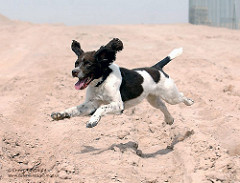
Leaping (defense)

answer
A defender at least one yard in front of the line of scrimmage running forward and leaping in an attempt to block a field goal or a point-after try lands on other players on either team. The penalty is not called if the defender was within one yard of the line of scrimmage at the time of the snap. NCAA Referees do the same as Personal foul, it is a subset of that penalty. NFL Referees do the same as Unsportsmanlike conduct, it is a subset of that penalty.
question
Leverage (defense)

answer
A defensive player jumping or standing on a teammate or an opponent to block or attempt to block an opponent's kick. NCAA/NFL Referees do the same as Unsportsmanlike conduct, it is a subset of that penalty.
question
Neutral Zone Infraction (defense)
answer
Before the snap, a defensive player (most often a lineman) jumps into the neutral zone and \"startles\" an offensive player, causing him to false start. It is the same signal as encroachment/offsides.
question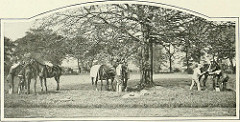
Offside (offense or defense)

answer
A player is on the wrong side of the line of scrimmage when the ball is snapped. This foul occurs simultaneously with the snap. Unlike offensive players, defensive players are not compelled to come to a set position before the snap. If a defender jumps across the line but gets back to his side before the snap, there is no foul. In the case of an offside foul, play is not stopped, and the foul is announced at the conclusion of the play. Media covering the games call it a \"free play\" for the offense, as the non-offending team may decline the penalty and take the yardage gained on the play (and when the play works against them, like a turnover to the opposing team, the non-offending team can accept the penalty and retake possession of the ball) - unlike in the case of a false start foul against the offense, whereupon the play is immediately stopped by the officials. This foul is almost always committed by the defense (any offensive player that moves into the neutral zone after setting would be charged with a false start). However, it is possible for the offense to commit this foul. If an offensive player lines up in the neutral zone, an offside foul will be called against the offense. The signal is the same as the \"Encroachment\" penalty.
question
Palpably Unfair Act
answer
Called as necessary in the case of any illegal action that the officials deem has clearly and indisputably deprived a team of a score. For example, if a player or other person not legally in the game at the start of a given play comes onto the field to tackle a player apparently en route to a touchdown, the team that would have scored is awarded the touchdown. This can also conceivably (explicitly in high-school rule books) be invoked in cases where the defense commits repeated intentional infractions very close to its own goal line (the half-the-distance rule making the consequence of such infractions otherwise insignificant).
question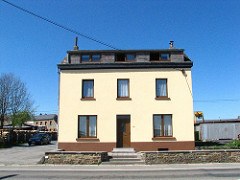
Pass Interference (offense or defense)

answer
Making physical contact with an intended receiver (intentional physical contact in NFL), after the ball has been thrown and before it has been touched by another player, in order to hinder or prevent him from catching a forward pass. (On offense, the restriction begins at the snap and continues until the ball is touched in order to prevent receivers from blocking defenders away from a passed ball.) The signal is: Both arms extended in front of the body, palms upright, in a pushing motion.
question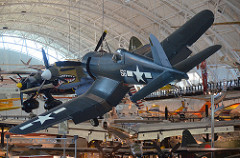
Personal Foul (offense or defense)

answer
A conduct- or safety-related infraction. Includes unnecessary roughness, such as hitting a ball carrier after he is already out of bounds, \"piling on\" a ball carrier who is already down, or violent contact with an opponent who is away from and out of the play. If the officials decide that the action was particularly flagrant, the player in question can be ejected from the game. The signal is: One arm extended from the body and bent at the elbow; the forearm is tilted at an angle, so the wrist is roughly in front of the collarbone but at a distance from the body. The other arm is brought down in a chopping motion, striking the first arm wrist-to-wrist.
question
Roughing the Passer (defense)
answer
A defender continues an effort to tackle or \"hit\" a passer after the passer has already thrown a pass. (In the NFL, a defender is allowed to take one step after the ball is thrown; a defender is penalized if he hits the passer having taken two or more steps after the ball leaves the passer's hand, or if the passer is hit above the shoulders, or if the passer is targeted using the crown of the helmet.) The signal is: Open-fist arm extended above same-side shoulder, brought diagonally downward towards the opposite side waist.
question
Roughing the Kicker (special teams)
answer
A defender, having missed an attempt to block a kick, tackles the kicker or otherwise runs into the kicker in a way that might injure the kicker or his vulnerable extended kicking leg. This protection is also extended to the holder of a place kick. The signal requires to use the referee's legs instead of the hands; it goes like this: Leg moved in a kicking motion preceded by the personal foul signal.
question
Roughing the Snapper (special teams)
answer
On a punt or field goal attempt, the center is allowed to regain his balance and assume a protective position before he is contacted by the defense.
question
Running Into the Kicker (special teams)
answer
On a kicking play where the defense fails to touch (\"block\") the kicked ball, the defense runs into the kicker/punter. If such an act occurs but is not intentional, this foul is assessed. If intentional, the personal foul of roughing the kicker is assessed instead. The leg signal is: Extending one leg, straight, up to about a 20 degree angle in front of the body. If the penalty is roughing the kicker, preceded by the personal foul signal.
question
Sideline Infraction
answer
A player is outside of the team box, a coach is outside the coaches' box (along the sideline in front of the team box), or too many coaches are in the coaches' box. (In high school, the penalty for a coach on the field of play is unsportsmanlike conduct, not a sideline infraction.) The signal is: Arms bent and extended to both sides, hands waved forward and backward in a pushing motion. Interference (NFHS): Both hands placed behind the back.
question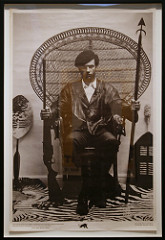
Spearing (offense or defense)

answer
Tackling or otherwise contacting an opponent with one's helmet. (This technique is illegal because of the risk of neck injuries to the tackler.) The signal is: Arm extended, bent at the elbow, touching the side of his head with a closed fist.
question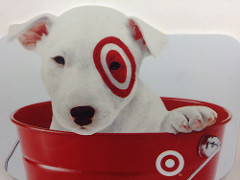
Targeting

answer
A defensive player tackles with the crown of his helmet, by initiating contact to the opponent's head above the player's neck, or makes helmet-to-helmet collision. It's a Personal Foul, the ref needs one arm bent to form a triangle, fist pointing at head.
question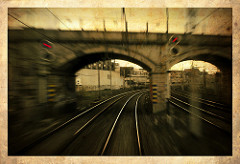
Tripping

answer
A player trips another player with the lower leg. Note that tripping the runner is legal under NCAA and NFHS rules. The leg signal is: One foot kicks the ankle of the other leg from behind.
question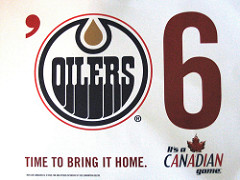
Unsportsmanlike Conduct

answer
Any person (usually a player but occasionally a coach and very rarely one or more spectators) acts or speaks in a manner deemed to be intentionally harmful or especially objectionable by the game officials, or by rule. Unsportsmanlike conduct is a non-contact foul; if contact is involved it becomes a personal foul. Examples include verbal abuse of officials, and taunting, which, since 2004 in the NFL, has included any \"prolonged and premeditated celebrations\" by players (prior to that year the latter carried only a 5-yard penalty). Later rules included using the football or end zone pylon in a touchdown celebration. If the officials decide that the action was particularly flagrant, the player, coach or spectator in question may be ejected from the game. In high school, if a single player, coach or spectator commits two unsportsmanlike conduct fouls, the person in question should automatically be ejected. The signal is: Both arms extended to the sides perpendicular to the body with open fists, palms down. Almost like the ref is forming the letter \"T\" with its body.



